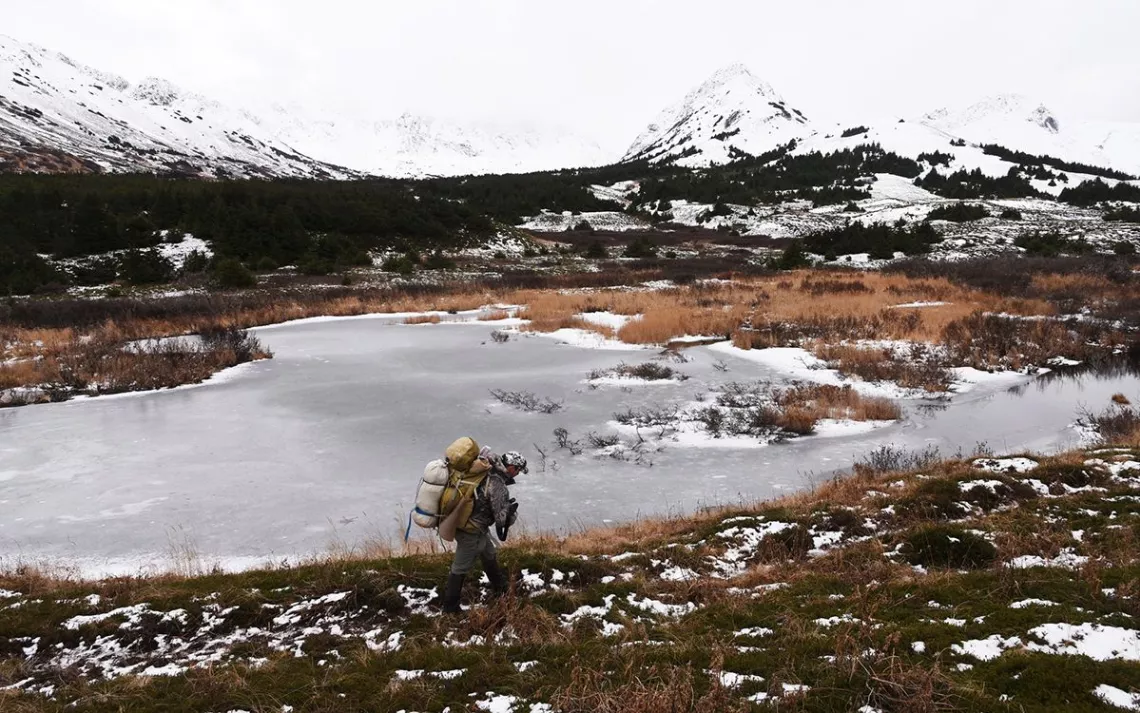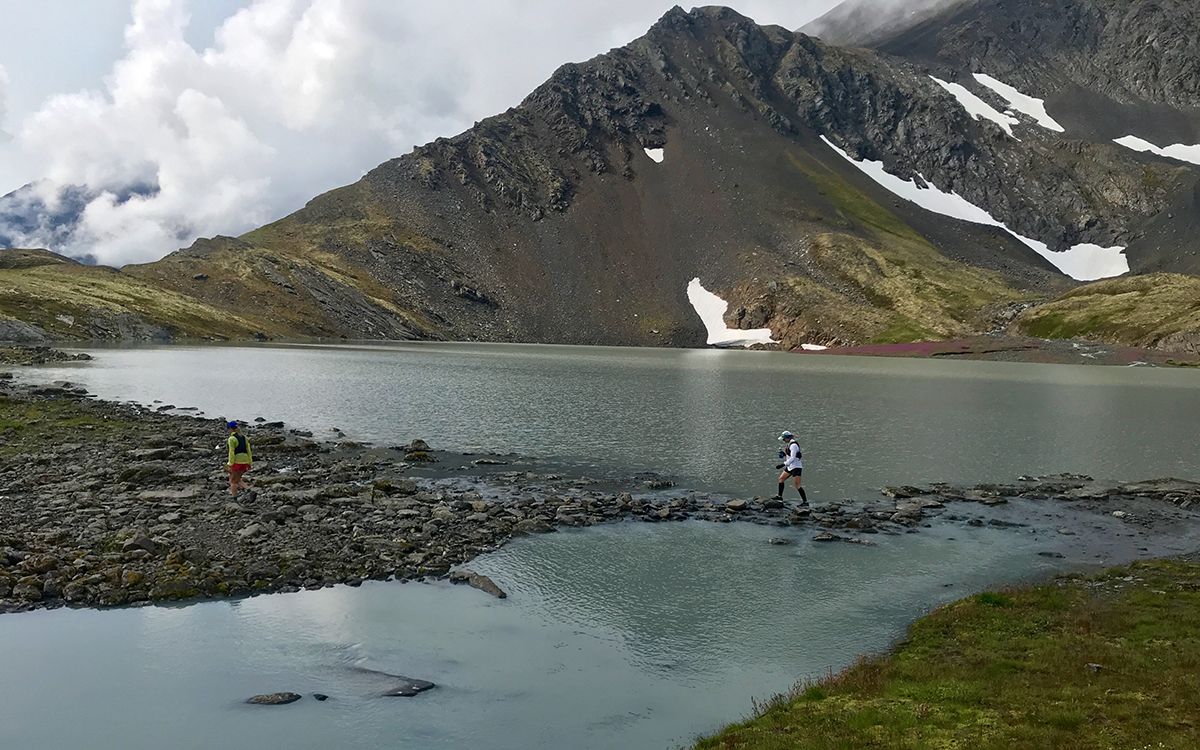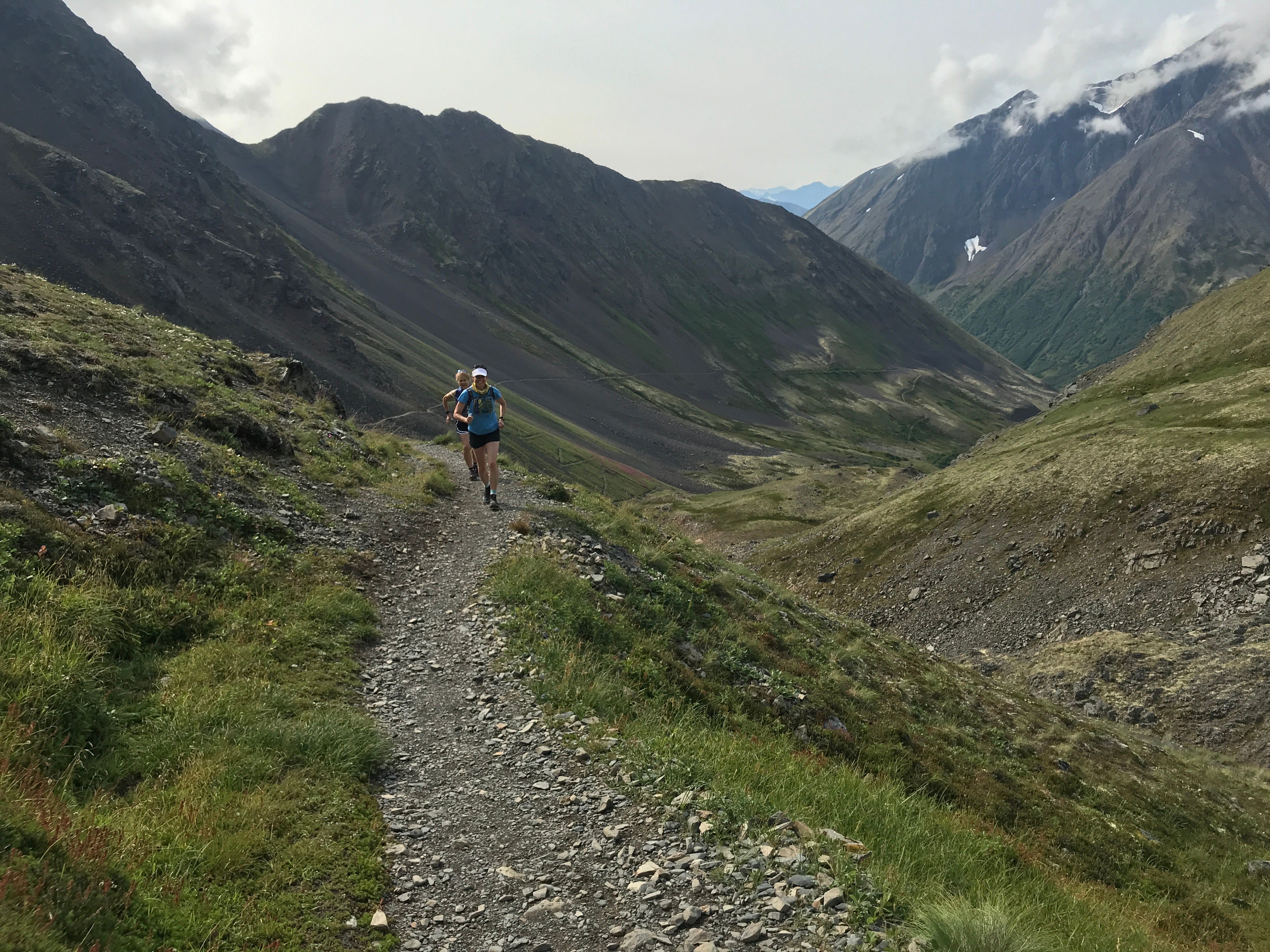One Day You Might Be Able to Thru-Hike Alaska on a Super Trail
The Alaska Trails Initiative aims to combine some of the state’s best routes

Ship Creek drainage, Chugach State Park, Alaska | Photo by Paxcon Woelber
Alaskans like to argue about which trails in the state are the best of the best, but in a few years the list of options will have shrunk—not because the trails are disappearing but because at least some of them are going to be combined into a super trail.
Called the Alaska Long Trail, the route could initially span over 500 miles from Seward to Fairbanks, connecting dozens of the top-ranked trails in the state, including Crow Pass, Kesugi Ridge, and the southern trek of the Iditarod National Historic Trail.
The idea is the brainchild of the Alaska Trails Initiative, a nonprofit advocacy and trail-building group. Last spring, organizers were looking for their next big project. As they poured over topographic maps of existing trails, they started wondering, “What if we connected these to make a thru-hike?”
“The idea for the Alaska Long Trail came about sort of organically,” said program coordinator Chris Beck. “We thought, ‘Well, we could have something much greater than the sum of these parts.’”
They knew that extended thru-hikes like the Appalachian Trail, Pacific Crest Trail, and the Continental Divide Trail in the US and innumerable others throughout the world had long inspired travelers. As they evaluated the map they realized it wouldn’t take too much effort to link up some of the longest and arguably most iconic Alaska trails, creating a multiweek hike with offerings only Alaska could provide, one that passes by glaciers, through boreal forests and Indigenous villages, and over stunning peaks, offering sightings of moose, bears, Dall sheep, and other Alaska wildlife.
More than that, even the most celebrated of the pre-existing trails traverse remote backcountry.
“There’s a well-deserved mystique about Alaska, that it’s one of the few wild places remaining on the planet,” Beck said. “These [areas] haven’t been altered by human activities, they’re intact natural landscapes.”
Right now, roughly two-thirds of the project consists of well-established routes or routes already under construction. The remaining third is what Beck calls “less well specified,” including known but unmarked routes through alpine country and areas that have little tradition of foot traffic. Luckily, most of the latter part is on public land, which lowers the cost and complexity of getting the necessary go ahead from local governments.

Hikers on Crow Pass | Photo by Lia Slemons
If all goes well with those first 500 miles, the Alaska Trails Initiative tentatively plans to add 1,500-plus more miles to the route with an additional trail continuing north through the Arctic Circle to the coast and another portion that could extend to the southeast, combining trails and ferry rides to travel around various islands.
While the early days of a global pandemic might seem like a peculiar time to launch an undertaking of this magnitude, Beck and his team argue the timing couldn’t have been better.
“This last year has shown in vivid detail that people like to get out and are looking for ways to be active,” Beck said, referring to the fact that trail systems nationwide have seen a tremendous increase in traffic as a result of the pandemic.
They also think that the plan could help Alaska build back stronger. In an op-ed in Anchorage Daily News, former Alaska governor Tony Knowles, an early supporter of the project and chair of the Long Trail’s advisory group, argued that the construction of the trail would create jobs building bridges, trailheads, and sanitation facilities as well as actually cutting new sections of trail.
“We … must begin expanding the foundation for a clean and sustainable industry, an industry that will support both immediate and long-term Alaska jobs and Alaskan-owned businesses,” Knowles wrote.
Over the past year, organizers have been in discussions with various stakeholders. Filling in the gaps between existing trails will require support from land managing agencies, communities traversed by the trail, and local governments as well as their active involvement in planning, securing funding, and constructing the infrastructure.

Runners on Crow Pass | Photo by Lia Slemons
Organizers also need to decide whether the route will be purely a walking trail or if some portions might also be open to snowmobilers, horseback riders, bikers, or other users; if they should develop a hut system like the Appalachian Trail; and how to build new sections responsibly so that the landscape isn’t degraded.
“We at Alaska Trails are strongly in favor of more and better trails, but we’re also advocates of sustaining the unique qualities that make Alaska the wonderful, unique place that it is,” Beck said.
Along with getting shovels in the ground, organizers hope to soon add signage that indicates how far trail users are from Seward and Fairbanks, even if they’re just doing a day hike along the way on one of the shorter trails.
“Something like, ‘It’s 48 miles to Seward and 452 miles to Fairbanks,’” Beck explained. “The power of that mental image and the feeling of, ‘Oh yeah, if we kept going, we’d end up there,’ is what, in part, creates excitement for the project.”
Though the project is in the early stages, Beck is optimistic that they’ll see enormous progress in the next five or so years.
Even if the trail takes longer than that to complete, Beck said it’s likely that hikers will have to complete the route in stages anyway, coming back over multiple summers to pick up where they left off. The hiking season is short in Alaska—Crow Pass often still has snow on the ground in mid-June.
“We want this to be a reason that people choose to spend time in Alaska.”

Alaska Long Trail | Courtesy of the Alaska Trails Initiative
 The Magazine of The Sierra Club
The Magazine of The Sierra Club



